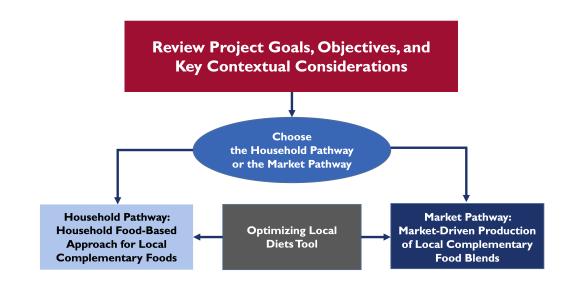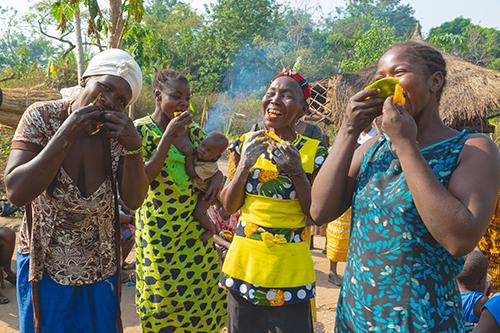This guide is for the United States Agency for International Development’s (USAID) Bureau for Humanitarian Assistance (BHA)-funded Resilience Food Security Activity (RFSA) Implementing Partners (IPs) and is intended for use by a multi-disciplinary RFSA team. RFSAs typically include a food assistance resource transfer component, a key benefit of which is to support age-appropriate complementary feeding of children 6–23 months of age and improve women’s or household dietary diversity. However, to sustain these benefits in the long-term, RFSAs often look to transition to using local alternatives. This guide aims to support RFSA IPs’ transition from providing resource transfers to using locally available, accessible, and affordable alternatives to sustain nutrition outcomes for women and children under age two. It provides resources, workbooks, templates, and tools with instructions on how to optimize the use of local foods to improve women and children’s nutrition and dietary diversity in a given program area.
- The primary objective is to support RFSA IPs in developing local food-based approaches for complementary feeding and dietary diversity of children 6–23 months of age.
- The secondary objective is to support RFSA IPs with the development of a menu of nutrient-rich food options based on locally available foods to promote the dietary diversity among adolescent girls, pregnant and lactating women (PLW), women of reproductive age, and vulnerable households.
The guide describes two pathways to consider to optimize the use of local foods. Depending on the program context, you could opt to use a household food-based approach for complementary foods, or a market-driven approach for the production of enriched blended complementary foods.
Process for Optimizing Diets by Using Local Foods

This guide presents a stepwise process for a RFSA team to apply and has two pathways and two tools. It starts by undertaking a contextual analysis to ensure the RFSA team has a sound understanding of the local context and taking into consideration whether and how a program aims to improve nutrition outcomes for children aged 6–23 months and the dietary diversity of women of reproductive age, or households. If a primary objective is to improve infant and young child feeding practices, the RFSA team should consider which pathway to pursue based on the understanding of the local context: either the household food-based approach (Household Pathway) or the market-driven approach (Market Pathway).
Both pathways use the Optimizing Local Diets Tool (OLDT) to facilitate dialogue with a multi-disciplinary team and identify locally available, nutrient-dense foods to use in programming. This user-friendly tool helps you: 1) identify up to 30 of the most nutritious foods in a given context, which can be used to determine which foods to promote (Option 1), and/or 2) develop food-based recommendations (FBRs) or enriched flour-based blends (EFBs) for complementary feeding based on the nutrient composition of locally available foods (Option 2).
The Household Pathway, involves reviewing existing data, collecting primary data on current dietary practices for children under age two, and developing and testing FBRs using local foods to promote in a given program area. The process consists of two stages, Stage A involves developing FBRs and Stage B involves testing, modifying, and scaling up the FBRs using Trials of Improved Practices.
The Market Pathway requires engagement with local private sector entities (e.g., small and medium enterprises [SMEs]). The stages and steps in this pathway include developing a business model (Stage A), which requires the identification of local SMEs and similar complementary food products; developing complementary feeding blends; assessing EFB acceptability and willingness to pay (AWP) by the intended consumer; and costing the business model using a Business Model Calculator Tool (BMCT) tool. Stage B of this pathway involves testing the business model to support the production, marketing, and promotion of an EFB for complementary feeding in your program area.
